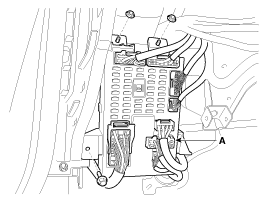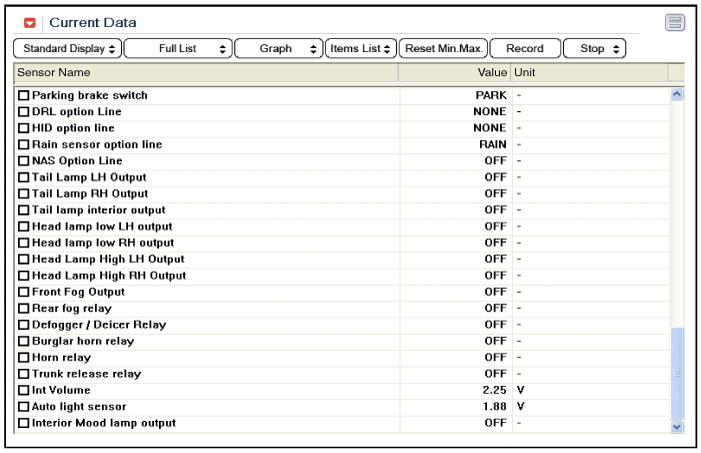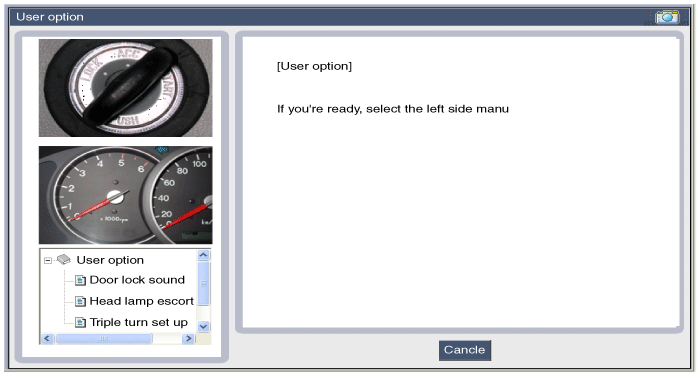 Hyundai Veloster: IPM (Intelligent integrated Platform Module). Repair procedures
Hyundai Veloster 2011-2017 Service Manual / Body Electrical System / BCM (Body Control Module) / IPM (Intelligent integrated Platform Module). Repair procedures
Hyundai Veloster: IPM (Intelligent integrated Platform Module). Repair procedures
Hyundai Veloster 2011-2017 Service Manual / Body Electrical System / BCM (Body Control Module) / IPM (Intelligent integrated Platform Module). Repair procedures
Hyundai Veloster 2011-2017 Service Manual / Body Electrical System / BCM (Body Control Module) / IPM (Intelligent integrated Platform Module). Repair procedures
Removal
| 1. |
Disconnect the negative (-) battery terminal.
|
| 2. |
Remove the crash pad lower panel. (Refer to the BD group - "Crash
pad")
|
| 3. |
Disconnect the IPM connectors, loosening the nut (2EA) and the
bolt (1EA), then remove the IPM.
|
| 4. |
The installation is the reverse order of removal.
|
IPM Diagnosis with GDS
| 1. |
It will be able to diagnose defects of IPM with GDS quickly. GDS
can operates actuator manually, input/output value monitoring and self
diagnosis.
|
| 2. |
Select model and "IPM".
|
| 3. |
Select the module to check.
|
| 4. |
Select "Input/output monitoring", if you will check current data
of body network system. It provides input/output status of each module.
|
| 5. |
If you will check each module data operation manually, select
"Actuation test".
|
| 6. |
To check the DTC of the each module, select "DIAGNOSTIC TROUBLE
CODES".
|
| 7. |
If you want to change user option, select “user option”.
|
 IPM (Intelligent integrated Platform Module). Description and Operation
IPM (Intelligent integrated Platform Module). Description and Operation
Description
IPM Overview
The Body Control Module (IPM-Intelligent integrated Platform Module) supplies
vehicle occupants with visual and audible information and it controls various
vehic ...
 Seat Electrical
Seat Electrical
...
See also:
Start/Stop Button. Repair procedures
Removal
1.
Disconnect the negative(-) battery terminal.
2.
Remove the center fascia panel assembly (A).
3.
...
Interior care
Interior general precautions
Prevent caustic solutions such as perfume and cosmetic oil from contacting the
dashboard because they may cause damage or discoloration. If they do contact the
dashbo ...
Components and Components Location
Component Location
1. Auto light sensor
2. Head lamps
3. Lighting switch (Auto)
4. Tail lamps
5. Body control module (BCM)
...
Categories
© 2011-2025 Copyright www.hvmanual.com





